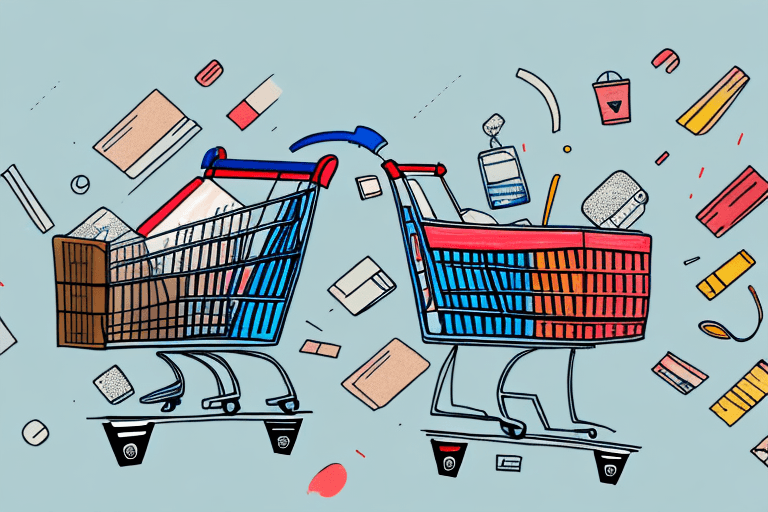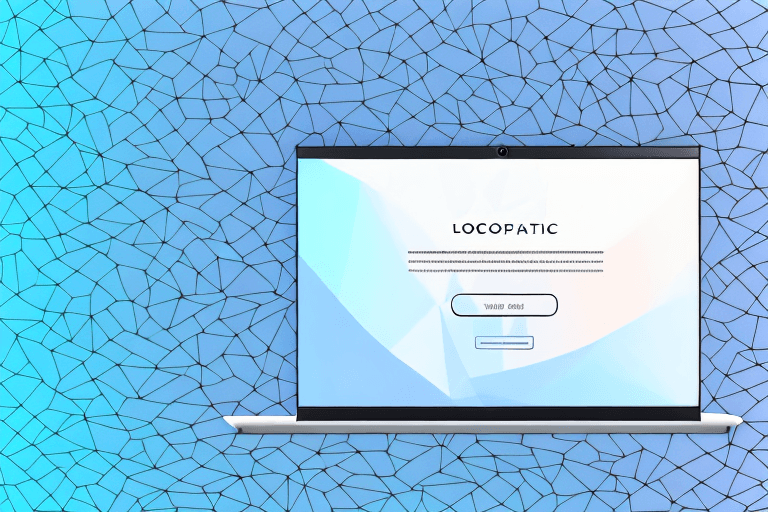Online shopping has become increasingly popular over the years. However, a significant issue facing eCommerce platforms is shopping cart abandonment. According to a study, the average global cart abandonment rate for eCommerce was 88.05% in 2020. Despite this, not all hope is lost. There is a way that businesses can capitalize on this by sending out well-crafted abandoned cart recovery emails. In this article, we will look at how to create an effective abandoned cart email template that will help you recover those lost sales.
Understanding Abandoned Cart Emails
An abandoned cart email is a type of automated email that businesses send to a shopper who has added items to their cart but has failed to complete the checkout process. This email serves as a reminder to encourage the shopper to return to complete their purchase. The purpose of abandoned cart recovery emails is to drive conversion rates and recover lost sales.
The Importance of Abandoned Cart Recovery
Cart abandonment is a significant problem for many businesses, but abandoned cart recovery emails can help recover lost sales. According to a SaleCycle study, abandoned cart recovery emails achieve an impressive average open rate of 44.1%, and a click-through rate of 11.6%. This means that there is a high chance that shoppers will open and read these emails, and potentially return to complete their purchase. Furthermore, an effective abandoned cart recovery email can help build customer loyalty and trust. When shoppers receive a well-crafted email that addresses their concerns and reminds them of their interest in the product, they are more likely to feel valued and appreciated by the business. Therefore, it is crucial to create an effective abandoned cart email that will help you recover lost sales and build customer loyalty.
Identifying the Causes of Cart Abandonment
Before designing your abandoned cart email template, it is crucial to identify the reasons why shoppers abandon their carts. Common reasons include unexpected extra fees, complicated checkout processes, lack of trust, etc. For example, if shoppers are surprised by extra fees during checkout, they may feel misled and decide not to proceed with their purchase. If the checkout process is complicated or lengthy, shoppers may become frustrated and abandon their cart. Additionally, if shoppers do not trust the business or website, they may not feel comfortable sharing their personal and payment information. Once you have identified the causes, you can tailor your abandoned cart email to address these concerns and increase the chances of conversion.
For example, if unexpected extra fees are a common cause of cart abandonment, you can include a clear breakdown of all fees in your abandoned cart email. This will help shoppers understand the total cost of their purchase and avoid any surprises during checkout. If the checkout process is complicated, you can simplify the steps and provide clear instructions in your email. You can also include customer reviews or testimonials to build trust and reassure shoppers that other customers have had positive experiences with your business.
In conclusion, abandoned cart recovery emails are a valuable tool for businesses to recover lost sales and build customer loyalty. By understanding the causes of cart abandonment and tailoring your emails to address these concerns, you can increase the chances of conversion and improve the overall shopping experience for your customers.
Designing Your Abandoned Cart Email Template
Your abandoned cart email is more than just a reminder to the shopper that they left something behind. It's an opportunity to engage with them and potentially convert them into a customer. Therefore, it's important to have a clear and well-designed layout to capture the reader's attention. Here are some tips to consider when designing your template.
Choosing the Right Email Layout
When it comes to designing your email layout, simplicity is key. Your email layout should be easy to read and include all the necessary information. A well-designed email template should have a clear header and footer, a catchy subject line, and a relevant image. You can also consider using a single-column layout to make it easier for the reader to navigate.
Using Attention-Grabbing Subject Lines
A great subject line will make your email stand out in the reader's inbox. Keep it short but engaging by using emojis and action-oriented words. For example, "Don't let this deal slip away!" or "Your cart misses you! Come back and complete your purchase."
Incorporating Engaging Visuals and Copy
Visuals such as product images can help to remind the shopper of what they left behind in their cart. However, it's important to choose the right visuals that are relevant to the product and visually appealing. Also, ensure that your copy is engaging, concise, and highlights the value of the product. For instance, you can use phrases such as "Limited time offer" or "Exclusive discount for you."
Personalizing Your Email Content
Personalization can make the email feel more human and less automated. You can include the shopper's name, the item they left in their cart, and recent purchases to create a more personalized experience. Additionally, you can also include product recommendations based on their browsing or purchase history to entice them to come back and complete their purchase.
By following these tips, you can create an effective abandoned cart email that not only reminds the shopper of their abandoned cart but also engages them and encourages them to complete their purchase.
Crafting a Compelling Call-to-Action
A call-to-action (CTA) is an essential element of your abandoned cart email. It is the final push that can make or break a sale. A well-crafted CTA can help you recover lost sales and increase your revenue. Here are some tips to create a compelling CTA.
Offering Incentives to Complete the Purchase
Offering incentives such as a discount or free shipping can help to push the shopper to complete the purchase. Everyone loves a good deal, and providing an incentive can be the extra nudge a shopper needs to make the purchase. It is important to make the incentive compelling enough to grab their attention but not too generous that it eats into your profits.
For instance, you could offer a 10% discount on their next purchase or free shipping on orders above a certain amount. This way, the shopper feels like they are getting a good deal, and you get to recover a lost sale.
Creating Urgency with Time-Sensitive Offers
A time-sensitive offer can create a sense of urgency that will encourage the shopper to complete their purchase before the offer expires. Time-sensitive offers are a great way to create scarcity and increase the perceived value of your products.
You could offer a limited-time discount or a free gift with their purchase. This way, the shopper feels like they are getting an exclusive deal that is only available for a short time. It is essential to make the offer clear and communicate the deadline effectively to create a sense of urgency.
Providing Clear and Direct CTAs
Make sure the CTA is clear, concise, and direct, leading the shopper back to their cart to complete their purchase. The CTA should be prominently displayed and stand out from the rest of the email. It should be easy to find and click on.
For instance, you could use a button with text like "Complete Your Purchase Now" or "Claim Your Discount." The button should be large enough to be easily clickable on both desktop and mobile devices. It is also important to ensure that the CTA leads the shopper directly to their cart, so they can complete their purchase without any confusion.
In conclusion, a compelling CTA can be the difference between a lost sale and a recovered one. By offering incentives, creating urgency, and providing clear and direct CTAs, you can increase your chances of recovering abandoned carts and boosting your revenue.
Utilizing Email Automation for Abandoned Cart Recovery
Abandoned carts are a common problem for e-commerce businesses. According to a study by Baymard Institute, the average cart abandonment rate is 69.57%. This means that almost 70% of shoppers who add items to their cart do not complete the purchase. However, email automation can help recover some of those lost sales.
Once you have designed your abandoned cart email template, you need to set up email triggers and timing. Email triggers can be set up to target shoppers who have abandoned their carts at different stages of the checkout process. For example, you can send an email to shoppers who have added items to their cart but have not started the checkout process. You can also send a different email to shoppers who have started the checkout process but have not completed it.
Timing is also crucial. Sending the email immediately after the shopper abandons their cart can lead to a higher conversion rate. However, you can also experiment with sending the email a few hours or days later, depending on your business's specific needs.
Segmenting Your Audience for Targeted Messaging
Segmenting your audience based on their shopping behavior and personal information can help you create targeted messaging that resonates with the reader. For example, you can send a different email to first-time shoppers than to repeat customers. You can also personalize the email with the shopper's name and the items they left in their cart.
Another way to segment your audience is by the type of product they are interested in. For example, if you sell clothing, you can send a different email to shoppers who abandoned a cart with men's clothing than to shoppers who abandoned a cart with women's clothing.
Monitoring and Adjusting Your Email Campaigns
Regularly monitor your email campaigns' performance and make necessary adjustments to improve the conversion rate. You can A/B test your email content, subject lines, and call-to-action (CTA) to see what works best. For example, you can test different subject lines to see which one gets a higher open rate. You can also test different CTAs to see which one gets a higher click-through rate.
It's important to keep in mind that email campaigns are not a one-size-fits-all solution. What works for one business may not work for another. However, by experimenting with different strategies and monitoring the results, you can find the best approach for your business.
In Conclusion
An abandoned cart recovery email is a powerful tool that can help you recover lost sales and build customer loyalty. By incorporating these tips, you can create an effective abandoned cart email that will increase conversion rates and drive sales.




